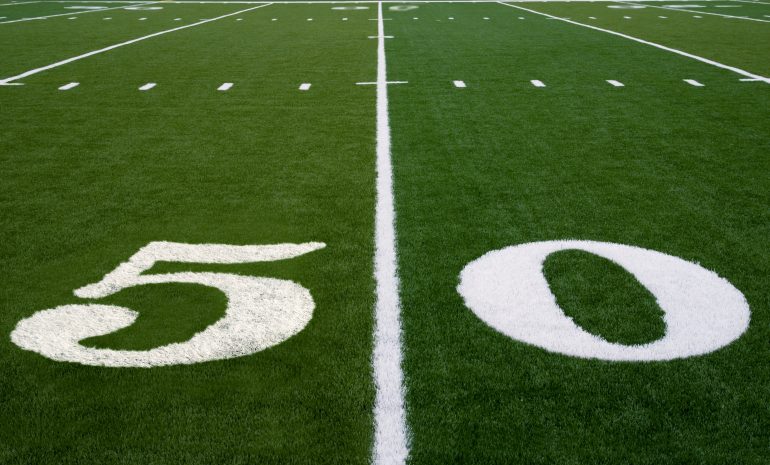

Twenty-four hours ago, if I had told you the Seahawks will kick off free agency by trading Max Unger and a 1st-round pick to the Saints in exchange for Jimmy Graham and a fourth-round pick, you probably would’ve told me to stop sharing my weird dreams with you.
But as weird as it sounds, it happened. And should we be all that surprised? We know the Seahawks’ front office has never backed down from making controversial decisions in the name of making the team better. But trading Unger? A cornerstone of the offense? Russell Wilson’s field general? No way.
Well, yes way. Now that it’s been a few hours and the new reality has sunk in, I actually like this deal significantly more than I did when it was first announced.
This is a high-risk, high-reward deal for the Seahawks. And we’re all going to point to the same example when the words “high-risk, high-reward” come to mind – first name Percy, last name Harvin. It’s a reasonable comparison. When Harvin came to Seattle, he came with plenty of buyer-beware warnings that were ignored in favor of his dynamic playmaking ability. In reality, he turned out to be a dynamic locker room cancer.
Graham seems to come with no history of those types of issues, until you look at this bit of jawing with Bruce Irvin during the 2013 playoffs. It didn’t escalate to anything beyond words, and it happened before anyone was even in uniform. It was also before a huge playoff game between two teams that already didn’t like each other very much. This is the NFL – that’ll happen.
But Irvin isn’t the only Seahawk who seems to take issue with Jimmy Graham. Michael Bennett had a few choice words for him as well, which were re-posted today on Twitter.
Graham is a fierce competitor. So from all we know so far, the jawing could just be a by-product of wanting to win. The Seahawks certainly have no shortage of those types of personalities on the roster already, and we love them for it. Ideally, Graham should fit right in.
But if Graham can’t make amends with the players on this team who have already voiced their opinions about him, it’s hard to predict how that story plays out. The Seahawks experienced a turbulent locker room to begin last season. That problem was jettisoned quickly, but at a high price. I don’t need to remind anyone that it took them to the brink of disaster, only to have it be resolved in time to begin a near-miraculous comeback. If anything, the fact that they were able to endure such adversity should be a testament to how far they’ll bend but never break.
Regardless, it would be extremely disappointing to have that situation repeat itself. While it’s not an identical move, the Graham trade bears some similarity to that of Harvin – giving up a first-round pick for a supposed elite player, first of all. The Seahawks don’t have a great track record of success when it comes to trading first-rounders. For whatever reason, the investment just hasn’t paid off the way it’s supposed to.
Secondly, Graham spent most of 2014 battling a serious shoulder injury. He played through all 16 games, which is a good reflection of his toughness, but he faded at the end of the season. In the final five games of 2014, Graham caught only 20 passes for 219 yards and one touchdown. Defenses may have used his injury to their advantage in coverage, but those defenses were the Texans, Colts, Eagles, Bucs, and Redskins – some of the worst in the league.
But how tough is Graham, really? He’s shown he’ll run away from contact; particularly when there’s a guy named Kam Chancellor bearing down on him. Whether this is a product of Graham not being tough enough, or Kam simply being utterly terrifying is anyone’s guess. Either way, I’m sure Graham is breathing a sigh of relief that he won’t have that problem anymore. After training camp, at least.
And let’s not forget what the Seahawks have given up to get Graham. Max Unger, when healthy, was a top-five center last season. He was a locker room leader, and a friend to everyone on the team. His presence in the middle of the line would be the glue that held the other four guys together when things appeared bleak. His blocking was some of the best in the NFC, and a key reason why Lynch gets the yards he does. Without Unger, the running game may take a sizable hit.
So the risks are definitely there with this trade. The trepidation fans may be feeling right now may be unwelcome and all too familiar.
But this is where the “high reward” part of the equation comes into play: While Harvin refused to go on the field last season on reportedly several occasions, and would often skip practice, Graham didn’t miss a game while battling constant injury. He’s only missed two games in his five-year career. And despite the late-season fade, he still finished with 85 catches for 810 yards and 10 touchdowns.
Graham’s commitment to playing through a painful shoulder injury may have been a deciding factor in Pete Carroll and John Schneider’s decision to give up so much for him.
With two other able-bodied tight ends in Tony Moeaki and Luke Willson on the roster, it’ll be very interesting to see what the Seattle offense looks like in 2015. If Graham can consistently line up outside and get double coverage, it will open up all kinds of possibilities for Marshawn Lynch. It should also give the Seahawks the deep, big-play guy they were missing last year. Paul Richardson began to emerge as that guy, but his torn ACL took him out of that picture. It also makes his availability a huge question mark for Week 1.
Even with the loss of Unger having a potential impact on the running game, I think the Seahawks got the bigger upside out of this trade. They appear likely to take a center early in the draft and develop him, much like they did with Unger from day one. Unger’s injury history made him difficult to rely upon, which forced the offensive line to get used to life without him before he was even gone.
Jimmy Graham is 28, and appears due for a bounce-back year. 2011 and 2013 were his best seasons, where he posted 1,310 yards and 11 touchdowns in 2011, and 1,215 yards and 16 touchdowns in 2013. Perhaps most impressive is his 2011 season, where a whopping 74 of his 99 catches were first downs.
He seems to fare best in odd-numbered years. Here’s to that trend continuing in 2015.

